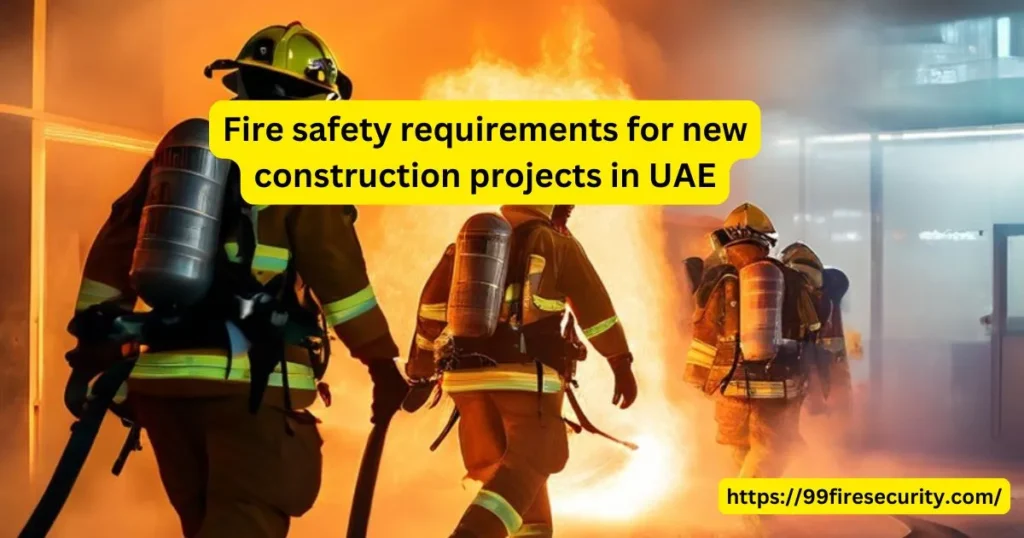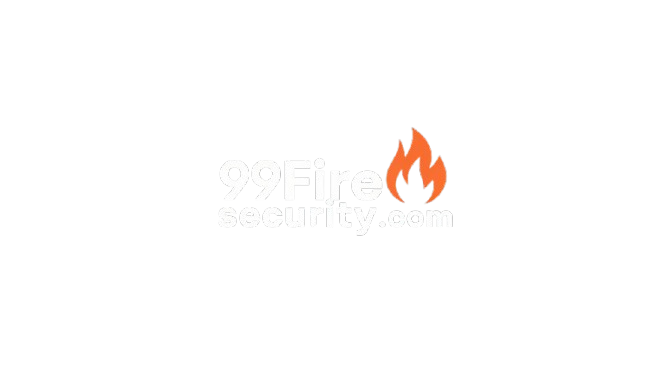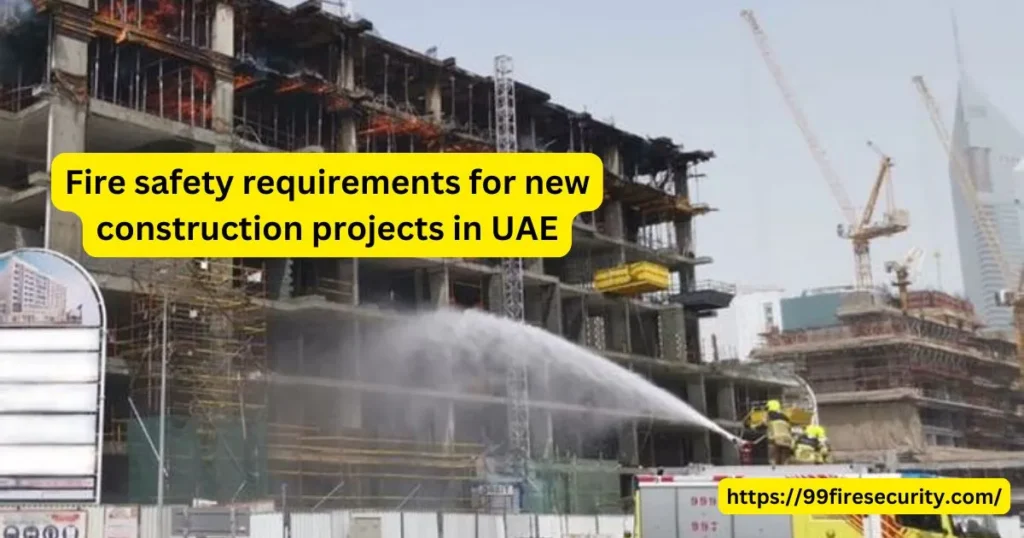Introduction
Now in the United Arab Emirates, with its soaring skylines and sweeping urban development, maintaining strict fire safety requirements standards is critical. With new advancements in fire safety requirements protocols, it becomes very complicated for developers, architects, and contractors to keep up with the country’s protocols to ensure that fire safety requirements rules approved in new construction projects are met.
Fire Safety Codes in the UAE: What Do They Mean?
The principal regulation in the country on fire safety is the UAE National Fire and Life Safety Code. This code provides fire safety requirements for fire prevention, suppression and response that must be followed in all construction projects. The code, which is regulated by the Civil Defence Authority in every emirate, guarantees uniformity of fire safety practices across the country.
Understanding the fire safety requirements is essential for anyone involved in construction or building management in the UAE.
Key authorities include:
- Dubai Civil Defence (DCD) — Here Dubai Civil Defence does fire safety work.
- Abu Dhabi Civil Defence Authority — The authority responsible for the capital’s fire safety measures.
- Sharjah Civil Defence: Fire compliance regulation in Sharjah and associated areas.
These groups collaborate between design reviews, inspections, and approvals to ensure fire safety adherence.
How to Plan Fire Safety in New Constructions
Planning for fire safety requirements early is key before breaking ground on a new project. It starts with a fire risk assessment, addressing hazards and the vulnerability of the proposed building. Developers are also required to present their fire safety plans to the Civil Defence Authority for scrutiny [6].
Key steps include:
Incorporating fire safety requirements into every phase of construction ensures compliance and enhances safety for all building occupants.
Addressing fire safety requirements early streamlines the approval process with the Civil Defence Authority.
- Examining potential sources of fire specific to the type of building.
- Constructing risk mitigation interventions, eg sprinklers, fire alarms.
- Working with local authorities on compliance approvals.
Not considering fire safety at this stage can result in expensive delays and revisions down the road.

Fire Safety Compliance within Building Design
Don’t just install alarms: Install fire-resistant materials, develop fire zones, and plan for safe evacuation. Flame-retardant materials like gypsum boards and treated steel significantly hinder the progress of flames, and fire zoning divides the house into sections to constrain the spread of fire.
Important design considerations are the following:
- Staircase enclosures: Smoke infiltration prevention.
- Ventilating systems: Provided at least with smoke control capability.
- Firefighting access: Keeping all areas open for emergency services.
- Fire Protection Systems: Critical Installations
Attention to fire safety requirements can significantly reduce risks and enhance overall building safety.
Ensuring compliance with fire safety requirements also involves regular training and drills for all building occupants.
In United Arab Emirates, newly built establishments are compelled to implement modern fire protection systems. These include:
The last type of fire alarm you can have is a fire alarm system.
- Fire Suppression Systems: Put out fires with sprinklers, foam or gas.
- Automatic systems like sprinklers can significantly reduce fire damage in the first few minutes of the event. All installations should comply with UAE Civil Defence standards and be inspected before the approval of the project.
Emergency Preparedness and Evacuation Plans
A solid emergency preparedness plan is also an essential component of a successful fire safety strategy. This includes turning on proper evacuation routes, but it also means that they must be accessible, properly marked, and free of obstacles. The evacuation plan will depend on the building configuration — the amount of space, how large and tall it is, occupancy loads.
All fire safety requirements should be documented and communicated clearly to avoid misunderstandings.
Investing in modern technology can help meet fire safety requirements effectively.
Essential elements of emergency preparedness are:
- Evacuation Routes: Broad avenues and stairwells that go straight to safe zones.
- Emergency assembly points: These are designated areas where building occupants can congregate during emergencies.
- Communications: Those PA systems and emergency alarms to help direct evacuations.
Regular fire drills are vital to ensure that residents, employees and security personnel have learnt evacuation protocols.

How Different Types of Buildings Approach Fire Safety
Fire safety requirements must be adhered to during inspections to ensure public safety.
The fire safety in the UAE is different based on the type of construction. Here are some specific considerations for different kinds of buildings:
Compliance with fire safety requirements is not just a legal obligation; it’s a moral responsibility.
Residential Buildings
- Smoke detectors and fire alarms are in each unit.
- Automation Sprinklers for common and individual apartments
- Safety ladders or appropriate emergency exits for high rise buildings.
Commercial and Industrial Buildings
- Fire suppression systems for factories or warehouses
- Fire extinguishers with a high-capacity for buildings that deal with flammable items.
- Improved fire-retardant protection for places where heavy equipment or chemicals are handled.
- The unique zone requirements were designed to manage the safety of building occupants and assets.
Fire Safety Inspections and Permits
We also make sure that fire safety passes a rigorous test by the Civil Defence Authority before a construction project is considered complete. These include inspections to ensure compliance with the UAE National Fire and Life Safety Code.
Evaluating past incidents helps refine fire safety requirements for future projects.
Engaging stakeholders in discussions about fire safety requirements enhances community trust.
Steps for Approval
- Phase – submission of fire safety plans
- Second: Physical checking of fire protection devices.
- Correction of any deficiencies noted by inspectors.
- We ensure issuance of fire safety compliance certificate.
These approvals frequently take longer than anticipated, often due to inadequate documentation or poorly executed fire safety measures, making strict adherence to guidelines essential.
Technological Innovations in Fire Safety
Technology has transformed fire safety on construction projects in recent years. AI systems can predict risks of fire by examining the materials used in construction as well as environmental factors. In a similar vein, Internet of Things (IoT) enables real-time monitoring of fire safety devices, ensuring a quick reaction during emergencies.
Examples of Innovations
- Smart Sprinklers: Triggered by real-time heat or smoke detection
- Pre-construct AI Findings: Identifies hazards before construction, )
- Automated Emergency Alerts: Instantly alerts authorities if a fire happens.
These technologies help improve safety but also rely on and benefit from streamlined processes of compliance.

Responsibilities of Contractor and Builder
Building a fire-safe environment is not solely the responsibility of architects and designers. It heavily relies on contractors and builders to implement the fire safety plans correctly. This includes:
- Obtaining and placing fire-resistant materials
- Safety drills on constructions sites.
- Training workers on fire safety protocols.
Rather, a fire-safe space is created through a proactive approach by the builders to ensure that fire safety standards are met at each stage of the project.
Fire Safety Requirements after Construction
After the building is operating, fire safety is an ongoing process. It is required under UAE law that regular inspections and maintenance of fire safety equipment like alarms and extinguishers and must be carried out.
Key Post-Construction Tasks
- Equipment Maintenance: Making Sure All The Systems Are Functional
- Routine Audits: Annual fire audits by certified inspectors.
- Preparing Occupants to Act in the Event of an Emergency: Training building occupants to respond effectively during emergencies.
These post-construction requirements are crucial and failing to comply with them can result in penalties or risk safety.
Fines for Breaches of Fire Safety Requirements
Regular reviews of fire safety requirements can help maintain compliance over time.
The penalty for failing to comply with fire safety requirements regulations can be severe in the UAE. These roles come with a few big risks, namely heavy fines, delays to projects or, in the worst case, criminal liability.
- Legal Consequences
- Minor violations shall incur fines from AED 500 to AED 50,000.
- Serious breaches: construction activities being potentially suspended
- Liability to third parties when a fire causes injury or property damage.
- Historical case studies demonstrate that non-compliance can result in immense financial losses for developers.
Weather-influenced Fire Safety in UAE
The harsh climate of the UAE brings specific challenges to fire safety requirements. (High temperatures can bring an increased fire risk and sandstorms can disrupt fire detection systems.)
Key Adaptations
- Installing fire equipment that is heat resistant.
- Ensuring fire alarms are sealed against sand intrusion.
- Establishing shaded assembly areas to shield evacuees from the sun in emergencies.
- Breaking down these challenges calls for both innovation and “best in class” practices.
Importance of Awareness in Fire Safety According to a Fire Safety Company
There is no fire safety system without the active participation of the people who live and work in the building. Training the residents on fire safety requirements measures like when and how to use extinguishers and evacuation passes can be life-saving during any crisis.
Community Initiatives
- Conducting fire safety seminars for residents.
- Making awareness campaigns through local media.
- Promoting involvement in fire drills and preparedness activities.
- Informed communities are more prepared to respond to fire emergencies appropriately.
Conclusion:
Fire safety in new construction projects is a collective responsibility that starts with the UAE’s National Fire Safety requirements and Life Code. Every stage — from pre-construction planning to post-construction maintenance — demands meticulous attention to detail. Through embracing technological innovations, adapting to climate challenges and fostering public awareness, the UAE remains a global benchmark for fire safety.
FAQs
UAE National Fire and Life Safety Code: What is it?
The National Fire Protection Association (NFPA) is a comprehensive regulatory framework covering fire safety standards for buildings in the UAE.
Which authority is responsible for fire safety in the UAE?
Fire safety regulations and approvals The Civil Defence Authority in every emirate.
Fostering a culture of fire safety requirements awareness is essential for all construction projects.
What are the consequences for violating fire safety regulations?
In some cases, penalties could involve monetary fines, halting construction activities, and legal liabilities.
What is the role of technology on fire safety in any construction projects?
Real-time monitoring and predictive risk assessment are enabled by technologies like AI and IoT.
What does fire safety have to do with public awareness?
Informed tenants can take action swiftly and directly, lowering casualties and property damages.
Ultimately, fire safety requirements form the foundation of a resilient construction project in the UAE.
Understanding local fire safety requirements is crucial for compliance and safety.
Conducting thorough training on fire safety requirements enhances preparedness.
Awareness of fire safety requirements can save lives in emergencies.
Communities informed about fire safety requirements are more prepared for emergencies.
Engagement in fire safety requirements training can enhance community resilience.
Fire safety requirements are essential for minimizing damage and ensuring safety during emergencies.
Regular updates to fire safety requirements keep them relevant to current standards.
Understanding the significance of fire safety requirements is vital for every construction stakeholder.


